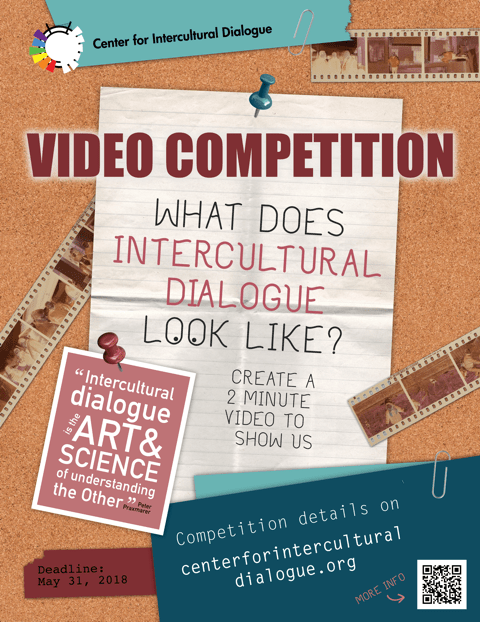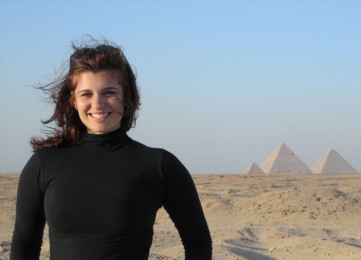 Recent events suggest that the world needs more people to listen to one another and to think about what they share rather than quite so many people ignoring one another, or making false assumptions about others. We must spend more effort promoting social cohesion (that is, emphasizing similarities across group boundaries) rather than leaving uncontested the frequent assumption that all cultural others have different agendas and share few of our values.
Recent events suggest that the world needs more people to listen to one another and to think about what they share rather than quite so many people ignoring one another, or making false assumptions about others. We must spend more effort promoting social cohesion (that is, emphasizing similarities across group boundaries) rather than leaving uncontested the frequent assumption that all cultural others have different agendas and share few of our values.
Intercultural dialogues are often assumed to require substantial effort in terms of organization, and to involve a lot of people having multiple interactions over a long period of time. This is certainly one model. However, many people have at least brief intercultural dialogues frequently, and easily. The goal of this new publication series is to invite a wide range of people to tell the story of a time when intercultural dialogue occurred, whether it was of the short and easy variety or the long and structured variety, providing models for those who do not frequently participate in intercultural dialogues.
In either model, intercultural dialogue is jointly constructed by participants, requiring cooperation to engage in new and different ways of interacting. It is more important to start from a position of curiosity and a willingness to listen than it is to undergo formal training (although at least some instruction or guidance is always useful).
Many of the people affiliated with the Center for Intercultural Dialogue consider themselves to be interculturalists. Many have lived and/or worked in multiple countries, speak multiple languages, and/or study intercultural interactions generally, if not intercultural dialogues specifically. The goal of this new series is to harvest the knowledge gained by this group and share it publicly.
To ensure consistency, all authors are asked to follow the same outline:
• Context – How did this episode come about? Who was involved, in what circumstances and location? What started the dialogue? Where did it happen?
• Participants – Since people have multiple identities, what are the cultural backgrounds that proved relevant? Provide some detail about the participants; for example, what language(s) were they speaking? What was your role in this episode? (observer, facilitator, translator, participant?)
• Description – How did the events unfold? Thinking now about what happened, what were the key parts of the process? Any interventions? Any sticking points?
• Dialogic features – What made it dialogue? That is, how was it different from ordinary conversation, what stood out as noteworthy that might be replicated in future?
• Lessons learned – What make it work as dialogue? What things could have been done better? What lessons would you pass on to others?
If you are interested in writing up a case study for this series and have previously published with the Center for Intercultural Dialogue, just write it up and send it in. If you have never published with CID, it might be best to first send a note introducing yourself, and briefly explaining what it is you would like to write about, receiving approval before you take the time to write.
As with Key Concepts in Intercultural Dialogue, this new series will not be subject to blind peer review, but rather will be accepted at the discretion of the Director. The logic is that these are not major research publications, but rather small notes intended for quick publication. No one is likely to earn tenure on the strength of such publications as these, but they have a different goal, that of sharing information rapidly and widely.
A few technical notes:
• These case studies should be based on personal experience.
• These should be written clearly using a minimum of jargon or technical terms, so that anyone can understand them, without quotes, footnotes, or references. Instead, the focus is on describing your own experience.
• Case studies should be 1-2 pages long, and will be edited and formatted to a common template prior to publication.
• Please use the section headings indicated in the outline above.
• On confidentiality: there’s no need to provide other people’s real names if that’s not essential to the story you’re telling.
• On copyright: authors retain copyright of their own work, and may publish in another format in future.
• If you have other questions, just ask.
These case studies will be published in English. However, given that translations of the Key Concepts in Intercultural Dialogue have received so many views, anyone who wishes to translate their own narrative into another language (or two) is invited to provide that as well, or to send a note explaining that it will follow. If you want to volunteer to translate others’ case studies into a language in which you are fluent, send in a note before starting, just to confirm no one else is working on the same one.
Thank you for taking the time to share your experience and knowledge.
Wendy Leeds-Hurwitz
Director, Center for Intercultural Dialogue
intercult.dialogue AT gmail.com
NOTE: The series has now started, and is to be found under Case Studies in ICD in the top menu; a direct link is here.
 REMINDER: This contest is coming up quickly, so tell your students and/or peers! Open to all students, undergraduate or graduate, anywhere in the world. First entries possible April 15, 2018; deadline May 31, 2018.
REMINDER: This contest is coming up quickly, so tell your students and/or peers! Open to all students, undergraduate or graduate, anywhere in the world. First entries possible April 15, 2018; deadline May 31, 2018.






